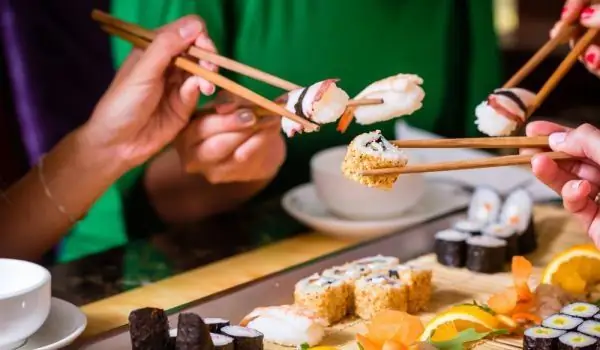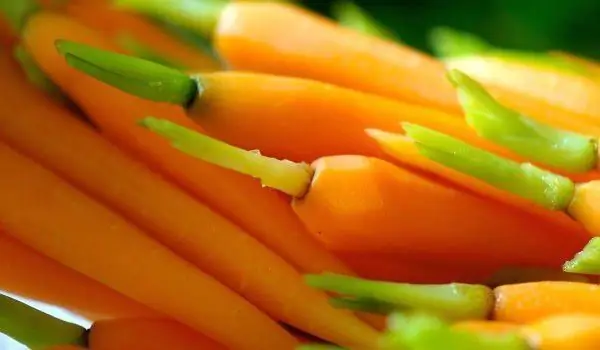2025 Author: Jasmine Walkman | [email protected]. Last modified: 2025-01-23 10:18
In Japanese cuisine, there are a huge number of ways to cut products. One of the most common is sainomegiri - dicing.
Take strips of pre-cut products and cut them to form cubes measuring 1.5 by 1.5 by 1.5 centimeters. This method is used for cutting carrots, bamboo, potatoes and put in salads, side dishes and cooked dishes.
Retail slicing is known as middingiri. For example, this applies to onions. It is cut in two and placed with the cut part to the board.
Incisions are made five millimeters apart. Then the knife stands in a horizontal position and the same cuts are made. Adhering to the onion head cut in this way, the knife begins to cut it with a distance between the incisions equal to five millimeters.
And if you want the onion to be cut even smaller, press the end of the knife with your hand and, moving the handle of the knife up and down, cut the onion. When finely chopping a long onion, make several incisions in the direction of the fiber and start cutting from the root.
Cutting sticks is called sengiri and is mainly used for carrots. You need to divide them into pieces about five centimeters long, which are then cut into thinner pieces. The plates are placed on top of each other and cut into sticks.

Kogutigiri is called cutting from the thin end. For example, chop green onions. It starts from the end of the feather perpendicular to the fibers. Thus chopped onions are used for seasoning dishes. If you cut a cucumber in this way, it is called usugiri, and if you cut carrots in this way - vagiri.
Sasagaki is the name for cutting bamboo, which is also used for carrots. Peeled bamboo or carrot is taken in the left hand and with a knife in the right hand begins to cut as a sharp pencil with a knife.
Mentors or smoothing the corners is done as a measure to improve the appearance of cooked carrots. They can be obtained with broken corners. To avoid this, sliced carrots should be stripped of their sharp corners. This is mostly done for beauty.
In order to cook the vegetables better, you can use the kakusibu technique or a hidden knife. The vegetables are cut into thick circles and a cross-cut is made on one side. When serving, these cuts should not be visible.
Recommended:
Teriyaki - The Classic Of Japanese Cuisine

Teriyaki soy sauce is synonymous with Japanese cuisine. It's like pizza for Italy or blue cheese for France. Aromatic and delicious, as befits a real soy sauce, Teriyaki can be the icing on the cake for any self-respecting meat dish. And as is often the case with culinary classics, Teriyaki sauce has long since crossed the borders of Japan and won applause all over the world.
Main Products Used In Japanese Cuisine

Just as corn, beans and hot peppers are associated with Mexican cuisine, and the use of a large number of different spices is typical of Arabic cuisine, so Japanese has its own preferences. Most of the products used in the Land of the Rising Sun are typical of most Asian countries, but there are also those that you can find only in Japan, or those that are widely used in the preparation of Japanese dishes.
Tips To Prepare The Perfect Stuffed Vegetables

Just mention some people's stuffed vegetables and they will immediately imagine some toasted or overcooked, wrinkled peppers and peeled zucchini. The secret is in choosing the right filling for the vegetable container. Use rather dry three-shaped mixtures with juicy zucchini vegetables.
Cooking Techniques In Japanese Cuisine

You can bring a little Japanese atmosphere to your home if you imagine that you are surrounded by seas and mountains and get acquainted with the traditional culinary techniques and recipes that Japan is proud of. Natural selection Japanese cuisine follows the seasons - vegetables and spices change, dishes also change throughout the year.
Shabu-shabu: The Incredible Japanese Exoticism

Japanese cuisine, which is mostly inspired by nature and its gifts, has created countless delicious recipes that are worth trying. Among the traditionally consumed dishes are the so-called nabemono, which are prepared on a hot plate directly in front of the guests.

